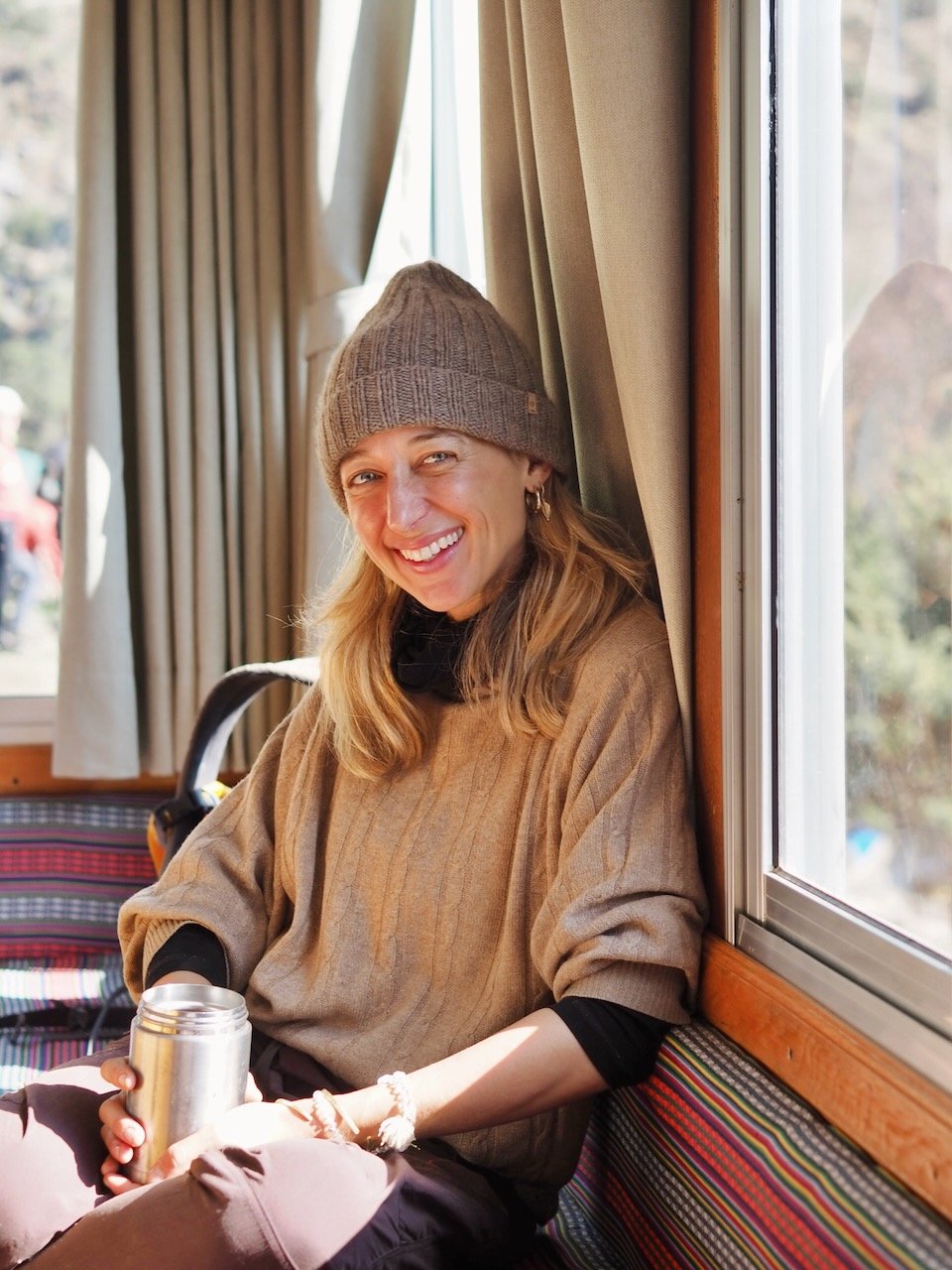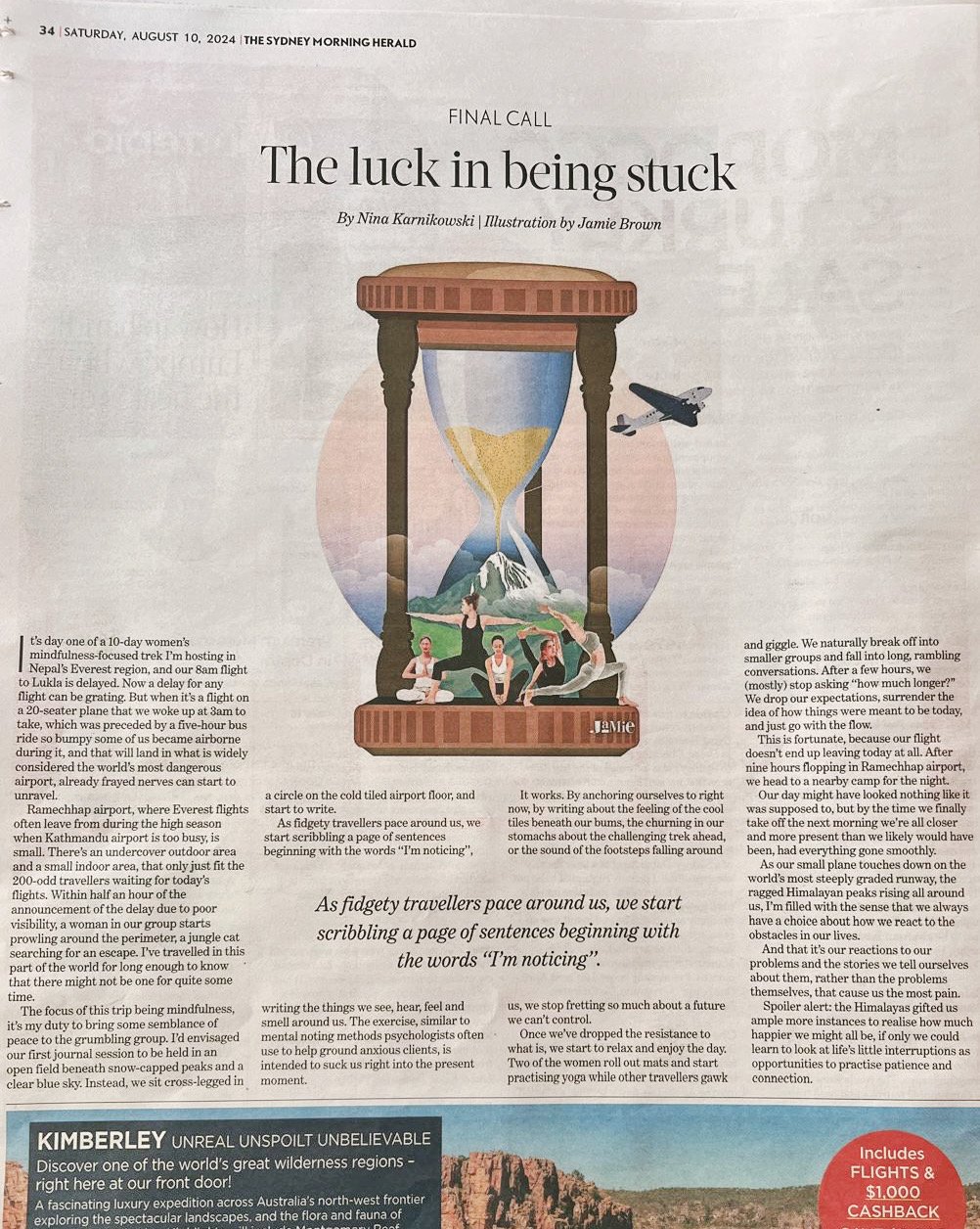FINDING MINDFULNESS DURING FLIGHT DELAYS: SMH TRAVELLER
Being stuck in a small airport for a day taught me a valuable lesson, WRITES NINA KARNIKOWSKIIt’s day one of a 10-day women’s mindfulness-focused trek I’m hosting in Nepal’s Everest region, and our 8am flight to Lukla is delayed. Now a delay for any flight can be grating. But when it’s a flight on a 20-seater plane that we woke up at 3am to take, which was preceded by a five-hour bus ride so bumpy some of us became airborne during it, and that will land in what is widely considered the world’s most dangerous airport, already frayed nerves can start to unravel.
Ramechhap airport, where Everest flights often leave from during the high season when Kathmandu airport is too busy, is small. There’s an undercover outdoor area and a small indoor area, that only just fit the 200-odd travellers waiting for today’s flights. Within half an hour of the announcement of the delay due to poor visibility, a woman in our group starts prowling around the perimeter, a jungle cat searching for an escape. I’ve travelled in this part of the world for long enough to know that there might not be one for quite some time.
The focus of this trip being mindfulness, it’s my duty to bring some semblance of peace to the grumbling group. I’d envisaged our first journal session to be held in an open field beneath snow-capped peaks and a clear blue sky. Instead, we sit cross-legged in a circle on the cold tiled airport floor, and start to write.
As fidgety travellers pace around us, we start scribbling a page of sentences beginning with the words “I’m noticing”, writing the things we see, hear, feel and smell around us. The exercise, similar to mental noting methods psychologists often use to help ground anxious clients, is intended to suck us right into the present moment.
It works. By anchoring ourselves to right now, by writing about the feeling of the cool tiles beneath our bums, the churning in our stomachs about the challenging trek ahead, or the sound of the footsteps falling around us, we stop fretting so much about a future we can’t control.
Once we’ve dropped the resistance to what is, we start to relax and enjoy the day. Two of the women roll out mats and start practising yoga while other travellers gawk and giggle. We naturally break off into smaller groups and fall into long, rambling conversations. After a few hours, we (mostly) stop asking “how much longer?” We drop our expectations, surrender the idea of how things were meant to be today, and just go with the flow.
Which is fortunate, because our flight doesn’t end up leaving today at all. After nine hours of flopping around Ramechhap airport, we head to a nearby camp for the night. Our day might have looked nothing like it was supposed to, but by the time we finally take off the next morning we’re all closer and more present than we likely would have been, had everything gone smoothly.
As our small plane touches down on the world’s most steeply graded runway, the ragged Himalayan peaks rising all around us, I’m filled with the sense that we always have a choice about how we react to the obstacles in our lives. And that it’s our reactions to our problems and the stories we tell ourselves about them, rather than the problems themselves, that cause us the most pain.
Spoiler alert: the Himalayas gifted us ample further opportunities to realise how much happier we might all be, if only we can learn to look at life’s little interruptions as opportunities to practise patience and connection.
This article was first published in print, below, and online here.

